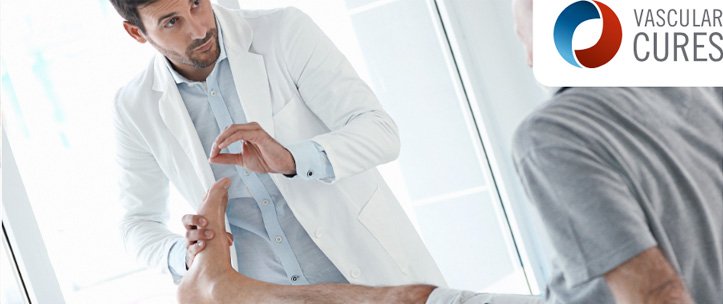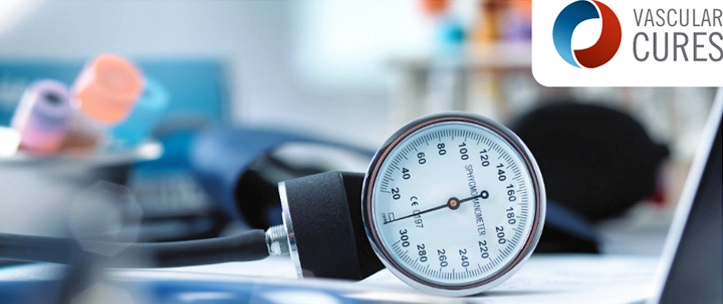Educational Flyers
This collection of flyers was designed with the patient in mind. The content carries a “patient seal of approval.” It can all be downloaded too!
Making informed decisions about your health care is important.
Vascular Cures’ Patient Partners helped design and review each flyer to make sure the information is focused on the patient experience. The flyers are designed to help patients better understand their condition and empower them to ask questions and share concerns with their healthcare providers.
If you are a healthcare professional or community-based organization interested in distributing our educational materials, please fill out our material use request form.

Abdominal Aortic Aneurysm
The aorta is the main artery of the chest and abdomen that carries blood from the heart to other areas in the body including the legs and feet. An aneurysm occurs when you have bulging of an...

Ankle-Brachial Index
The ankle-brachial index (ABI) is a simple, low-cost test for diagnosing peripheral artery disease (PAD). You can get this test in a doctor’s office or lab. The technician will measure…

Aortic Dissection
The aorta is the largest artery of the body. It delivers oxygenated blood from the heart to the rest of the body. Aortic dissection (AD) is a rare but serious injury to this artery...

Blood Clots
The medical term for blood clots in the veins is venous thromboembolism (thrahm-bö-EM-bö-lizm), or VTE. This describes two related conditions that are serious but highly preventable…

Buerger’s Disease
Thromboangiitis obliterans (TAO), also known as Buerger’s disease, is a rare disease that occurs when smaller arteries and veins in the arms and/or legs become inflamed. This frequently leads...

Carotid Artery Disease
The carotid arteries are blood vessels that carry oxygen-rich blood away from the heart to the brain. Carotid arteries are important because they supply blood to the part of the brain that controls…

Chronic Venous Insufficiency
Vein problems are among the most widespread chronic health conditions in the U.S. By age 50, nearly 40% of women and 20% of men have serious leg vein problems. At least 20 to 25 million…

Compression Therapy
When the body retains fluid in a specific area, such as the legs, arms, or abdomen, the subsequent swelling is referred to as edema. If you have edema, compression therapy may…

Deep Vein Thrombosis (DVT)
Deep vein thrombosis (DVT) happens when a blood clot forms in a large vein. These clots usually develop in the legs or pelvic area. Some DVTs don’t hurt, but others can be quite painful. With…

Ischemia and Chronic Limb-Threatening Ischemia
Ischemia (is-KE’me-ah) is a serious condition in which there is inadequate blood flow and oxygen to a specific part of the body. It can occur anywhere blood flows including the limbs…

Lymphedema
Lymphedema is a common cause of leg or arm swelling due to fluid collecting in those areas. The swelling is usually not painful, but it may cause a heavy, aching discomfort. It can limit…

PAD and Blood Pressure
Blood pressure is a measure of the force of blood flow within the walls of your arteries (blood vessels that transport blood away from the heart). It is measured in millimeters of mercury, or…

PAD and Cholesterol
Cholesterol is a waxy, fat-like substance found in the walls of cells in all parts of the body. Your body needs cholesterol to perform important jobs…

PAD and Diabetes
Peripheral artery disease (PAD) is a common disease that occurs when the arteries in the legs become narrowed or clogged with fatty deposits, or plaque. When leg arteries are clogged…

PAD and Foot Care
People who have peripheral artery disease (PAD) are more likely to have foot problems. This is because plaque narrows and blocks the arteries, which causes blood flow to slow. As a result, the…

PAD and Smoking
Smoking is a major cause of heart disease, cancer, and lung disease and the leading cause of peripheral artery disease (PAD). Studies show that smoking half a pack of cigarettes…

PAD and Walking
When you walk, your leg muscles require more oxygen from the blood than when sitting or standing. The arteries of someone with PAD, narrowed by plaque build-up from cholesterol and…

Portal Hypertension
Portal hypertension is high blood pressure in the portal vein. The portal vein is a major vein located in your abdomen that takes nutrient-rich blood from the intestines and carries it to the liver…

Prevent Blood Clots in Your Arteries
What is the link between blood clots and Peripheral Artery Disease (PAD)? Peripheral artery disease is a common circulatory problem that occurs when your legs’ arteries (blood vessels that transport blood…

Pulmonary Embolism
Pulmonary means “lungs,” and embolism means “blockage or obstruction.” A pulmonary embolism(PE) happens when a blood clot gets trapped in an artery in the lung….

